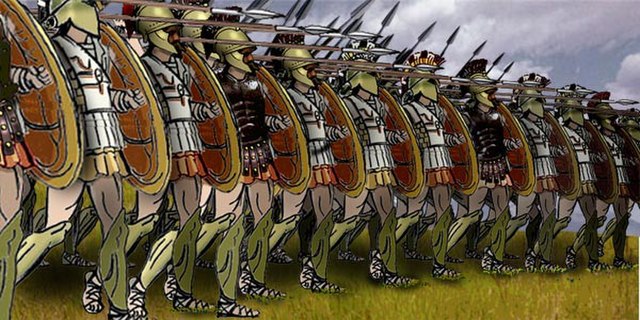A naval ram is a weapon fitted to varied types of ships, dating back to antiquity. The weapon comprised an underwater prolongation of the bow of the ship to form an armoured beak, usually between 2 and 4 meters (6–12 ft) in length. This would be driven into the hull of an enemy ship to puncture, sink or disable it.
A ram on the bow of Olympias, a modern reconstruction of an ancient Athenian trireme
Lateral view
Frontal view
Front view
Warfare occurred throughout the history of Ancient Greece, from the Greek Dark Ages onward. The Greek 'Dark Ages' drew to an end as a significant increase in population allowed urbanized culture to be restored, which
led to the rise of the city-states (Poleis). These developments ushered in the period of Archaic Greece. They also restored the capability of organized warfare between these Poleis. The fractious nature of Ancient Greek society seems to have made continuous conflict on this larger scale inevitable.
Ancient Greek marble relief (c. 330 BC) depicting a soldier in combat, holding his weapon in his hand as he prepares to strike a fallen enemy; the relief may have been part of an official Athenian state memorial; from the Ny Carlsberg Glyptotek collection, Copenhagen, Denmark
Reconstruction of a Hoplite Phalanx formation
Stele of Aristion, heavy-infantryman or hoplite. 510 BC. Top of helmet and pointed beard missing.
An Ancient Greek warrior, Riace bronzes, c. 450 BC








